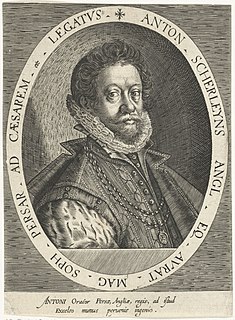 W
WThéodore-Agrippa d'Aubigné was a French poet, soldier, propagandist and chronicler. His epic poem Les Tragiques (1616) is widely regarded as his masterpiece. In a book about his Catholic contemporary Jean de La Ceppède, English poet Keith Bosley has called d'Aubigné, "the epic poet of the Protestant cause," during the French Wars of Religion. Bosley added, however, that after d'Aubigné's death, he, "was forgotten until the Romantics rediscovered him."
 W
WJean-Marie-Joseph Coutelle was a French engineer, scientist and pioneer of ballooning.
 W
WFrançois de Blanchefort de Créquy, later Marquis de Marines (1629–1687) was a 17th-century French noble and soldier, who served in the wars of Louis XIV.
 W
WCharles-Geneviève-Louis-Auguste-André-Timothée d'Éon de Beaumont, usually known as the Chevalier d'Éon, was a French diplomat, spy, Freemason and soldier who fought in the Seven Years' War. D'Éon had androgynous physical characteristics and natural abilities as a mimic and a spy. D'Éon appeared publicly as a man and pursued masculine occupations for 49 years, although during that time d'Éon successfully infiltrated the court of Empress Elizabeth of Russia by presenting as a woman. For 33 years, from 1777, d'Éon lived as a woman. Doctors who examined d'Éon's body after death discovered "male organs in every respect perfectly formed", but also feminine characteristics.
 W
WGaston Henri de Bourbon, Duke of Verneuil, was the illegitimate son of King Henry IV of France and his mistress, Catherine Henriette de Balzac d'Entragues. He was the bishop of Metz from 1612 to 1652, despite not being ordained. In his early 50s he was displaced and had a career as a diplomat.
 W
WAntoine de la Rochefoucauld, the second of this name, Seigneur de Chaumont-sur-Loire, served Louis I de Bourbon, prince de Condé as a knight and his chamberlain. On 7 October 1552, he married Cécile de Montmirail, daughter of Étienne de Montmirail, seigneur de Chambourcy, maître des requêtes and Louise de Selve.
 W
WPhilippe of Lorraine, known as the Chevalier de Lorraine, was a French nobleman and member of the House of Guise, cadet of the Ducal House of Lorraine. He was the renowned lover of Philippe I, Duke of Orléans, brother of Louis XIV.
 W
WJean IV de Noyelles was a French nobleman and knight.
 W
WJean Quintin or Quentin was a French priest, knight of the Order of St John and writer. His writings include Insulae Melitae Descriptio (1536), the earliest known detailed description of the Maltese Islands, which also contains the earliest known printed map of the archipelago.
 W
WXavier R. Rolet is a French businessman and the chief executive officer (CEO) of CQS. He is the former CEO of the London Stock Exchange Group. He was named in the 2017 Harvard Business Review's List of the Best 100 CEOs in the World and is a frequent keynote speaker at business events. Rolet is an advocate for supporting start-ups and the funding of SMEs to promote innovation and job creation.
 W
WSir Anthony Shirley (1565–1635) was an English traveller, whose imprisonment in 1603 by King James I caused the English House of Commons to assert one of its privileges—freedom of its members from arrest—in a document known as The Form of Apology and Satisfaction.
 W
WVital of Bayeux was a knight of William the Conqueror, known from the Bayeux tapestry and the Domesday Book.